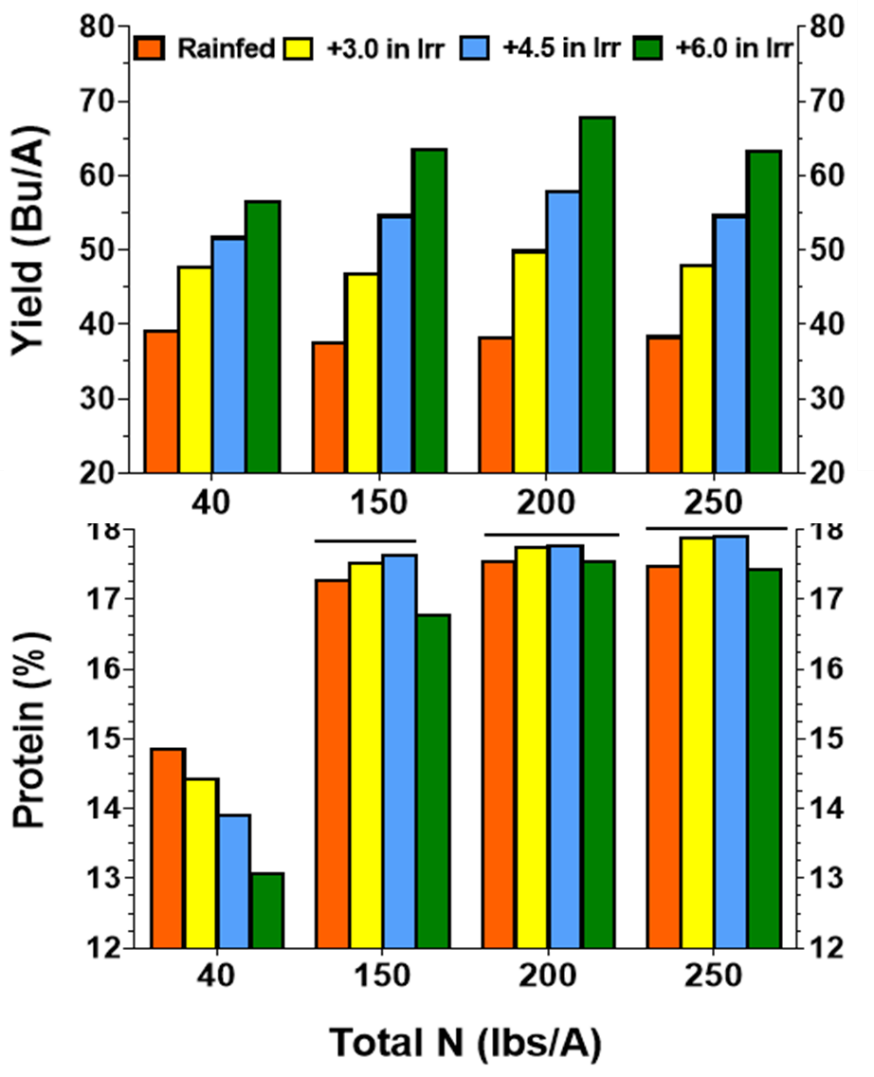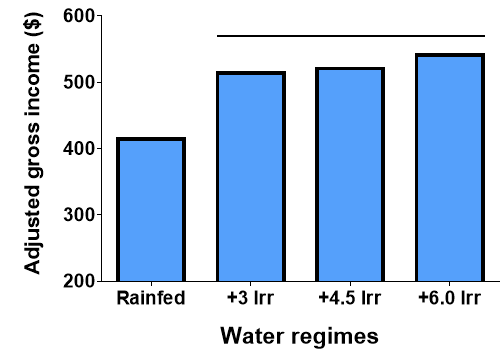Managing Water and Nitrogen of Egan Spring Wheat
J.Torrion, B. Bicego, and A. Sapkota
Link to Managing Water and Nitrogen of Egan Spring Wheat Printable PDF
Objective:
To assess optimal nitrogen and water requirement of Egan
Methods:
Egan spring wheat was grown under four nitrogen levels and four irrigation levels as a strip-split plot with four replications, where irrigation levels represent a vertical strip plot factor, and nitrogen as a horizontal strip factor. Irrigation treatments included 50 percent evapotranspiration (ET), 75ET, 100ET, and a rainfed check. The soil had a residual N of 33 lbs N/ A. The resulting total N for the treatments were 40 (check), 150, 200, and 250 total lb of N per acre. For simplicity, treatments are referred to as Total N and not an added N. Agronomic management and the total water applied to the irrigated treatments are in Table 1.
Summary:
This year was a drought year with only 3 inches precipitation received from planting to harvest. The maximum yield response of Egan was with 100 evapotranspiration, 100ET (6 inches total irrigation). There was a yield reduction when deficit irrigation was followed (Figure 1). Possibly, this variety is much more suitable to a well-watered condition. It is because Egan was able to maintain high protein with increasing yield via irrigation for as long as 150 total N/A is available. At this N level, it showed a slight decrease in protein (Figure 1) at 100ET, but such decline remained greater than 16% protein. With the N adjusted gross income (data not shown), for this year, it seems that one can further reduce N input particularly during a drought year (lower than 150 lbs/A). For instance, under rainfed treatment, yield was not increased with increased N application and yield became more responsive to N, up to 150 lbs/A, as water supplementation was increased (Figure 1). This year, irrigation increases adjusted income (Figure 2), but the three irrigated treatments (50ET, 75ET, and 100ET) are statistically insignificant. Falling number is not presented in this report because it is not a concern for Egan variety. Egan has high falling number regardless of management and environment.
Table 1. Agronomic management information |
|||
|---|---|---|---|
| Soil Type: | Flathead Fine Sandy Loam | Seed Treatment: | Cruiser Maxx Vibrance |
| Planted/Emerged: | May 3rd/May10th | Herbicide @4-leaf: | Huskie |
| Target Plants: | 25/ft2 | Fungicide @ Flag Leaf: | Tilt |
| Water Treatments: | Rainfed check = 3in | Nutrient Applied: | K2O = 33 lbs/A (KCl) |
| 50ET = +3in 75ET = +4.5in 100ET = +6in | P2O5 = 84 lbs/A (MAP) | ||
| Harvested: | Aug 11th | ||
| Footnote: ET, evapotranspiration; KCl, potassium chloride; MAP, monoammonium phosphate | |||

Figure 1.
Yield (top) and protein (bottom) of water regime treatments when subject to various nitrogen levels. Line over the bars is nonsignificance at α =0.05.

Figure 2.
Adjusted gross income with irrigation.
